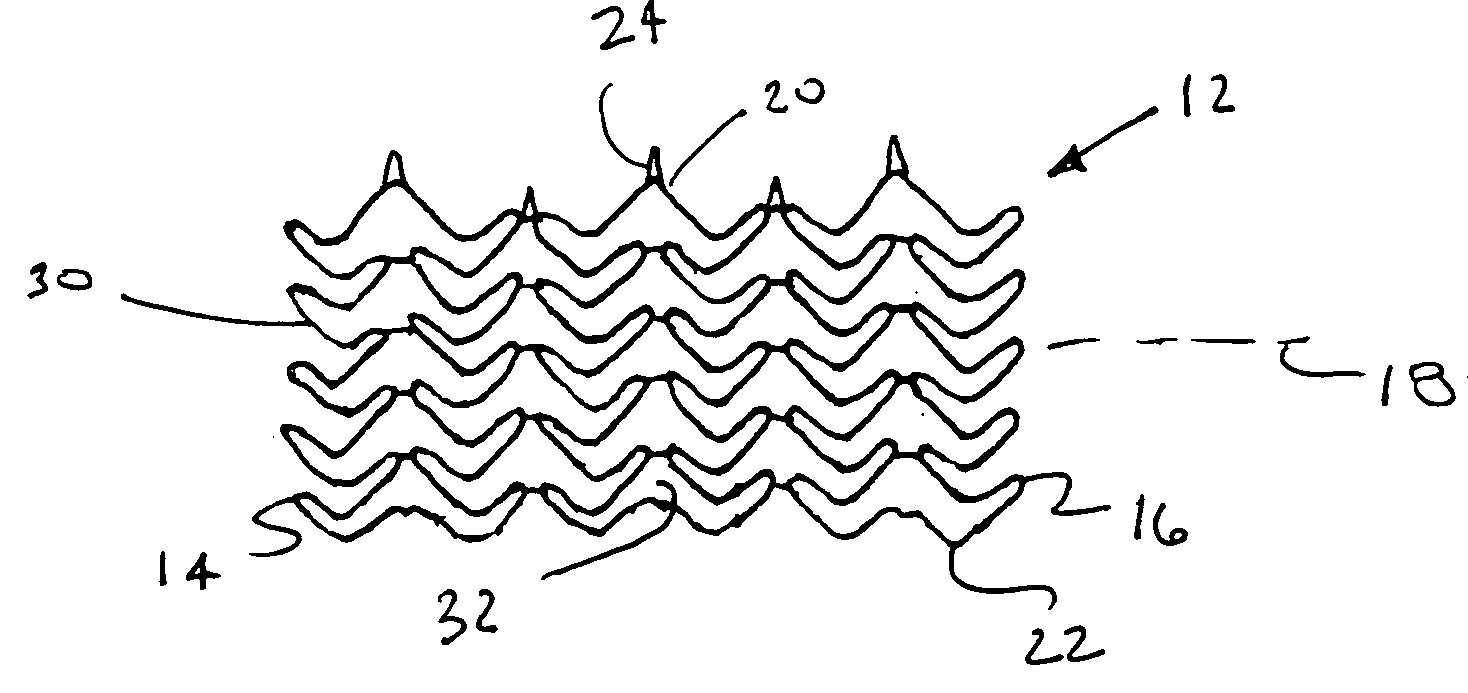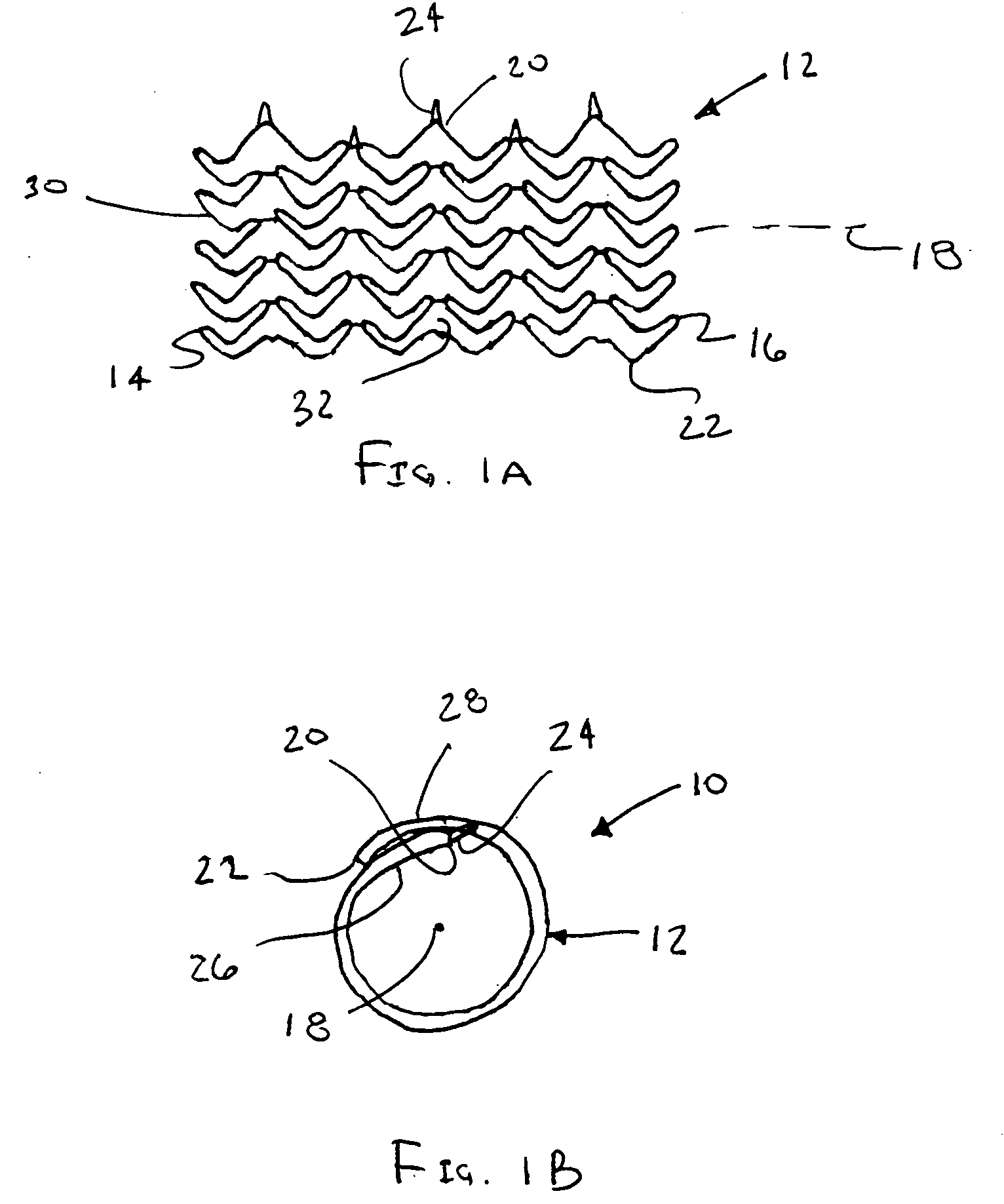Flexible, stretchable coiled-sheet stent
- Summary
- Abstract
- Description
- Claims
- Application Information
AI Technical Summary
Benefits of technology
Problems solved by technology
Method used
Image
Examples
Embodiment Construction
[0023] Turning now to the drawings, FIGS. 1A and 1B show a preferred embodiment of a coiled-sheet stent 10, in accordance with one aspect of the present invention. The coiled-sheet stent 10 is formed from a substantially flat sheet 12 having first and second ends 14, 16 defining a longitudinal axis 18 therebetween. The sheet 12 also includes first and second longitudinal edges 20, 22, the first edge 20 having a plurality of fingers or teeth 24 extending therefrom substantially perpendicular to the longitudinal axis 18.
[0024] The sheet 12 also includes a plurality of stretchable elements 30 formed therein, thereby defining a multi-cellular mesh structure capable of expanding and / or contracting in a direction substantially perpendicular to the longitudinal axis 18. Preferably, the stretchable elements 30 define a lattice-like structure providing a plurality of openings 32 for receiving the teeth 24, as described further below. The stretchable elements 30 may be elastically deformable...
PUM
 Login to View More
Login to View More Abstract
Description
Claims
Application Information
 Login to View More
Login to View More - R&D
- Intellectual Property
- Life Sciences
- Materials
- Tech Scout
- Unparalleled Data Quality
- Higher Quality Content
- 60% Fewer Hallucinations
Browse by: Latest US Patents, China's latest patents, Technical Efficacy Thesaurus, Application Domain, Technology Topic, Popular Technical Reports.
© 2025 PatSnap. All rights reserved.Legal|Privacy policy|Modern Slavery Act Transparency Statement|Sitemap|About US| Contact US: help@patsnap.com



